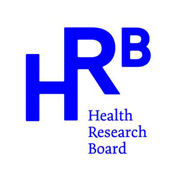
Cardiovascular disease (CVD) remains the leading cause of premature death and disability worldwide [1]. In Ireland, approximately 10,000 people die each year from CVD – including coronary heart disease (CHD), stroke and other circulatory diseases. While it is not possible to change the non-modifiable risk factors for CVD (such as age, ethnic background and family history), up to 90% of CVD may be preventable through lifestyle change and risk factor modification [2, 3]. When we examine these risk factors which contribute to CVD, we can see that diet explains more than 50% of CV events [2].
High cholesterol is an important modifiable risk factor for the development of CVD. Research has shown that a reduction in total cholesterol (TC) of 1mmol/L is associated with a 33% reduction in CHD deaths in those aged 50–69 years and a 17% reduction in those aged 70–89 years [4]. Despite overall reductions in TC and low-density lipoprotein cholesterol (LDL-C) at a population level, The Irish LongituDinal Study on Ageing (TILDA) reports a failure to control TC and LDL-C in those at highest risk of CVD in the older Irish population [5]. Similarly, the EuroAspire IV survey reports a high prevalence of modifiable risk factors (including high cholesterol), in patients with established CHD and people at high risk of developing CVD [6].
The influence of lifestyle change of the management of high cholesterol has been well documented [3, 7]. Many of these lifestyle changes also contribute to reducing overall CV risk through their influence on other risk factors (e.g. high blood pressure, type 2 diabetes, overweight and obesity). Table 1 outlines the lifestyle factors which have been shown to have the greatest magnitude of effect in terms of improving lipid profiles and are supported by evidence derived from multiple randomised clinical trials or meta-analyses [7]. These lifestyle factors can be broadly grouped as follows: improving dietary habits, increasing physical activity, consuming alcohol in moderation and reducing excess body weight.
In accordance with the shift from evaluating and treating single risk factors (such as cholesterol) to evaluating a person’s total risk profile, more research is now focusing on dietary patterns as opposed to single nutrients or food groups [6]. This move towards dietary patterns allows an estimate of the combined effect of dietary components on CV risk. The dietary pattern that has been more extensively researched in terms of CVD prevention is the Mediterranean diet. A recent systematic review and meta-analysis supports the beneficial effects of the Mediterranean diet on CV outcomes; however, the authors highlight the need for stronger study designs with adequate sample size in order to determine the true effect [8]. Published earlier this year, the SUN (Seguimiento Universidad de Navarra) prospective cohort study found greater adherence to the Mediterranean diet was associated with reduced incidence of all-cause mortality, fatal and non-fatal major CVD, type 2 diabetes, weight gain, metabolic syndrome, depression, cognitive decline, and nephrolithiasis [9].
Table 1. Lifestyle factors with greatest magnitude of effect on lipid profile
Lifestyle interventions to reduce TC & LDL-C levels | |
| Reduce trans fat | Found in processed foods such as cakes, biscuits, pastries and deep-fried foods. Avoid foods with ‘hydrogenated fat’ or ‘partially hydrogenated oils’ listed in their ingredients.
|
| Reduce saturated fat | Found in cakes, biscuits, pastries, butter, hard margarine, coconut oil, cheese and fatty meat.
|
| Lifestyle interventions to reduce TG levels | |
| Reduce excess body weight | Include regular meals, portion control, limit treat foods, physical activity.
|
| Reduce alcohol intake
| Recommended upper limits are 17 units a week for men and 11 units a week for women.
|
| Lifestyle interventions to increase HDL levels | |
| Reduce trans fat
| Found in processed foods such as cakes, biscuits, pastries and deep-fried foods. Avoid foods with ‘hydrogenated fat’ or ‘partially hydrogenated oils’ listed in their ingredients.
|
| Increase physical activity | 150 minutes/week of moderate intensity (brisk walking, slow cycling) or 75 minutes/week of vigorous intensity (jogging, running).
|
TC = Total Cholesterol; LDL-C = Low-density lipoprotein cholesterol; TG = Triglycerides; HDL-C = High-density lipoprotein cholesterol
Claire Kerins
Registered Dietitian & SPHeRE PhD Scholar
National University of Ireland Galway
Email: c.kerins2@nuigalway.ie
Twitter: @claire_kerins
References
- World Health Organisation (WHO). World Health Statistics 2017: Monitoring Health for the SDGs, Sustainable Development Goals. Geneva: WHO; 2017.
- Yusuf S, Hawken S, Ôunpuu S, Dans T, Avezum A, Lanas F, et al. Effect of potentially modifiable risk factors associated with myocardial infarction in 52 countries (the INTERHEART study): case-control study. The Lancet. 2004;364:937-52.
- Piepoli MF, Hoes AW, Agewall S, Albus C, Brotons C, Catapano AL, et al. 2016 European Guidelines on cardiovascular disease prevention in clinical practice. European Heart Journal. 2016;37:2315-81.
- Lewington S, Whitlock G, Clarke R, Sherliker P, Emberson J, Halsey J, et al. Blood cholesterol and vascular mortality by age, sex, and blood pressure: a meta-analysis of individual data from 61 prospective studies with 55 000 vascular deaths. The Lancet. 2007;370:1829-39.
- Murphy C, Shelley E, O’Halloran A, Fahey T, Kenny RA. Failure to control hypercholesterolaemia in the Irish adult population: cross-sectional analysis of the baseline wave of The Irish Longitudinal Study on Ageing (TILDA). Irish Journal of Medical Science 2017;186:1009-17.
- Kotseva K, Wood D, De Bacquer D, De Backer G, Rydén L, Jennings C, et al. EUROASPIRE IV: A European Society of Cardiology survey on the lifestyle, risk factor and therapeutic management of coronary patients from 24 European countries. European Journal of Preventive Cardiology. 2016;23:636-48.
- Catapano AL, Graham I, De Backer G, Wiklund O, Chapman MJ, Drexel H, et al. 2016 ESC/EAS guidelines for the management of dyslipidaemias. European Heart Journal. 2016;37:2999-3058.
- Liyanage T, Ninomiya T, Wang A, Neal B, Jun M, Wong MG, et al. Effects of the mediterranean diet on cardiovascular outcomes—A systematic review and meta-analysis. PLoS One. 2016;11:e0159252.
- Carlos S, De La Fuente-Arrillaga C, Bes-Rastrollo M, Razquin C, Rico-Campà A, Martínez-González MA, et al. Mediterranean Diet and Health Outcomes in the SUN Cohort. Nutrients. 2018;10:439.

